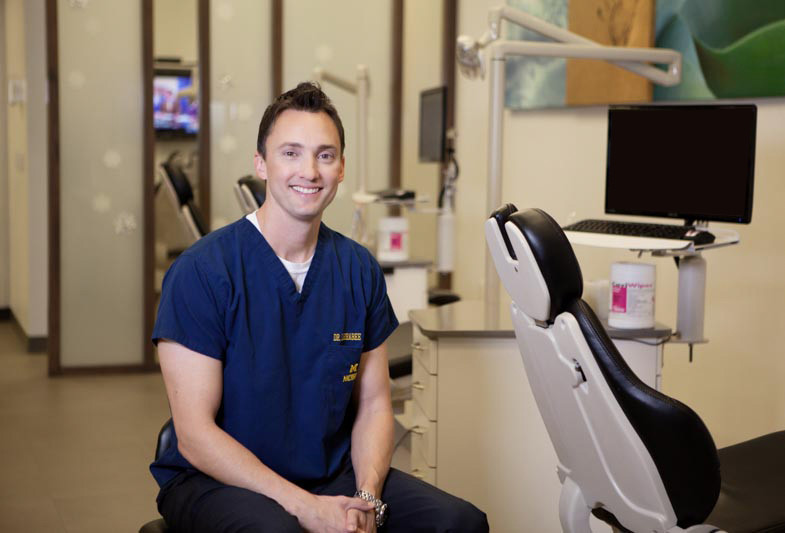What is orthodontics? Most people out there could probably tell you what an orthodontist does if you asked them. But there’s also a good chance that many of them wouldn’t be able to expand on the topic. We want to help you dig a little deeper into where the practice of Orthodontics originated, and most importantly, what it can do for you and your family!
 A Little Background
A Little Background
Orthodontics is the branch of dentistry that corrects teeth and jaws that are positioned improperly. But where did it originate?
In early 18th century France, a physician named Pierre Fauchard invented some revolutionary oral care techniques that would serve as a basis for a new field of orthodontics. Though rudimentary techniques had been used for hundreds of years before, in attempts to align teeth, Fauchard was the first to demonstrate a device like braces could be used effectively.
Since Fauchard, dental professionals have advanced the field leaps and bounds. Today, orthodontists offer services like Invisalign aligners, as well as traditional braces akin to—but far, far more effective than—Fauchard’s pioneering technology.
Orthodontists and Dentists: What’s the Difference?
Often, people confuse the field of orthodontics with general dentistry. Of course, these fields have some things in common as they both deal with oral health, but are quite different in other important ways. The first of these is pretty simple: all orthodontists are dentists, but not all dentists are licensed orthodontists.
It can be helpful to imagine orthodontists as engineers and dentists as architects. Of course, this analogy isn’t perfect, but in some general ways, it can clarify the distinct roles of orthodontists and dentists. Both medical professionals provide critical services that face different directions. Like an engineer, an orthodontist works on structural integrity. In this case, instead of steel and fiberglass, it’s teeth, nerves, and bones.
General dentists provide services like teeth whitening, root canals, crowns, and veneers. General Dentists can also diagnose problems that they might not necessarily have the particular training to treat on their own. For this reason, it’s incredibly important that orthodontists and dentists work together closely. Like an architect calling an engineer to solve the particulars of a structural problem, a dentist will refer his or her patients to a trusted orthodontist for help that might involve braces, aligners, and sometimes surgery.
Orthodontists work to solve many problems including the following:
- Overbite, sometimes called “buck teeth” — where the upper front teeth lie too far forward (stick out) over the lower teeth
- Underbite — a “bulldog” appearance where the lower teeth are too far forward or the upper teeth too far back
- Crossbite — when the upper teeth do not come down slightly in front of the lower teeth when biting together normally
- Open bite — space between the biting surfaces of the front and/or side teeth when the back teeth bite together
- Misplaced midline — when the center of your upper front teeth does not line up with the center of your lower front teeth
- Spacing — gaps, or spaces, between the teeth as a result of missing teeth or teeth that do not “fill up” the mouth
- Crowding — when there are too many teeth for the dental ridge to accommodate
What Orthodontics Can Do For You
The importance of orthodontic care and a knowledgeable orthodontist cannot be overstated. Orthodontists receive two or more years of education beyond their four years in dental school in an ADA-approved orthodontic training program.
While orthodontics does address cosmetic issues, there are many issues that orthodontists treat that are essential to ensuring proper oral health for you and your family. Teeth that are crooked or not in the right place can detract from one’s appearance, but more importantly, crooked teeth and teeth that do not fit together correctly are harder to keep clean. This puts your teeth at risk of being lost early due to tooth decay and periodontal disease. The misalignment can also cause extra stress on the chewing muscles that can lead to headaches, TMJ syndrome, and neck, shoulder and back pain.
In the simplest terms, everyone should see an orthodontist, even if you aren’t certain that you need any treatment. We want everyone to be confident in the health and appearance of their smile. You might have some overcrowded teeth that negatively impact your willingness to smile when you feel like it. Even if you don’t think about it consciously, maybe you’ve just gotten used to holding back a little when it comes to showing your teeth. Both dentists and orthodontists want to help you solve this kind of challenge, but only orthodontists can implement the tools necessary to train your teeth into congruence. Whether the patient is a child, teen, or an adult, technologies like high-tech braces, Invisalign, and Acceledent allow Orthodontists to provide a host of options for various issues.
People have valued straight, healthy teeth for hundreds of years. As a direct result, a long line of medical pioneers have developed more effective, more stylish, and safer, techniques to serve this end. The result of this development is the modern day field of orthodontics. Trusted specialists like Orthodontists you’ll find near you spend years studying, mastering, and even developing modern techniques and tools.
Unlike Fauchard and other early orthodontists, modern professionals have a host of new means by which to understand dental problems. These include 3D I-Cat imaging, Invisalign, and clear, self-ligating braces that allow them to tailor treatment options to each individual.
Find an Orthodontist near you by clicking this link!
Source: https://aosmiles.com/what-is-orthodontics/

